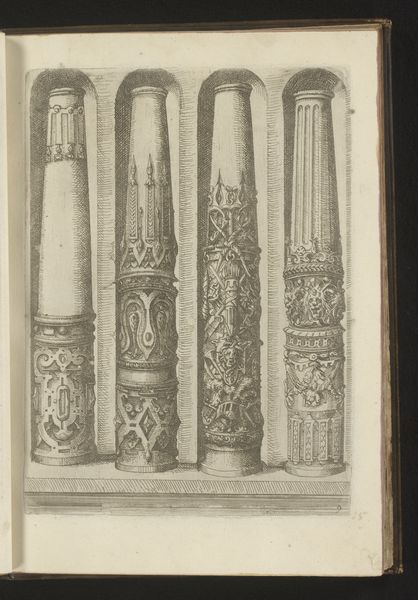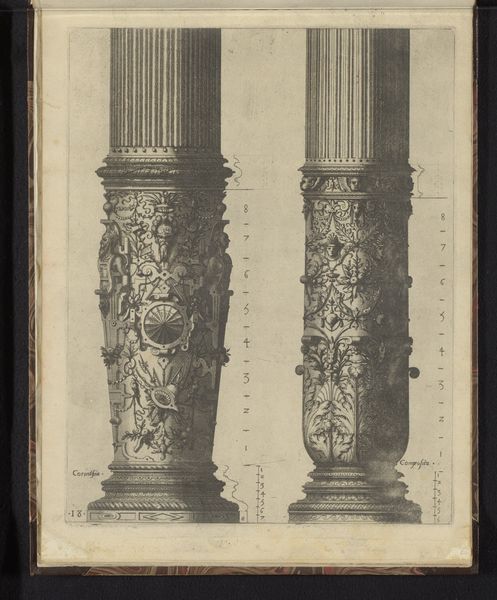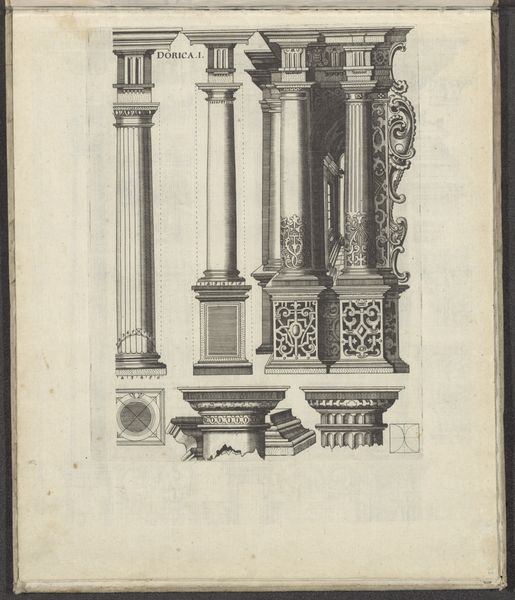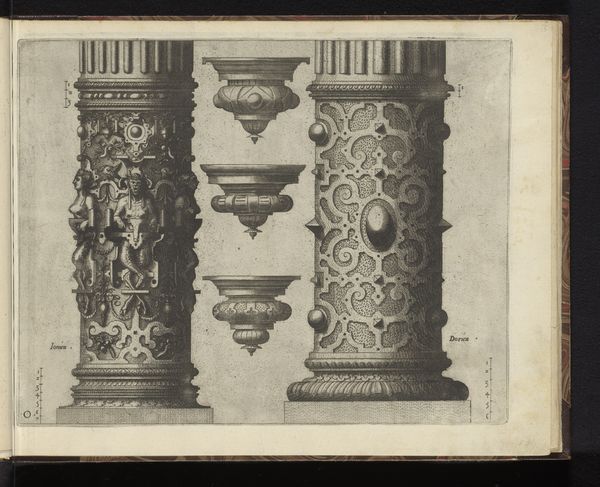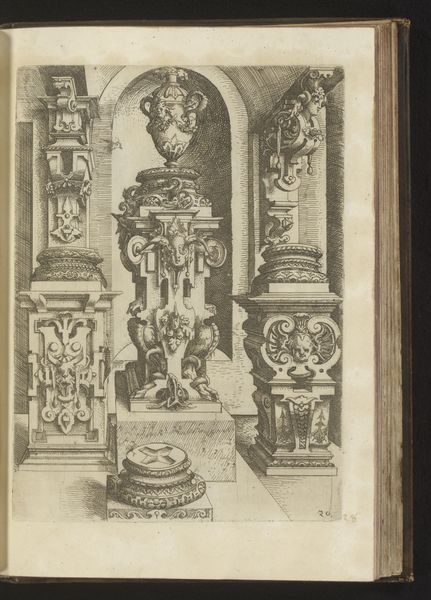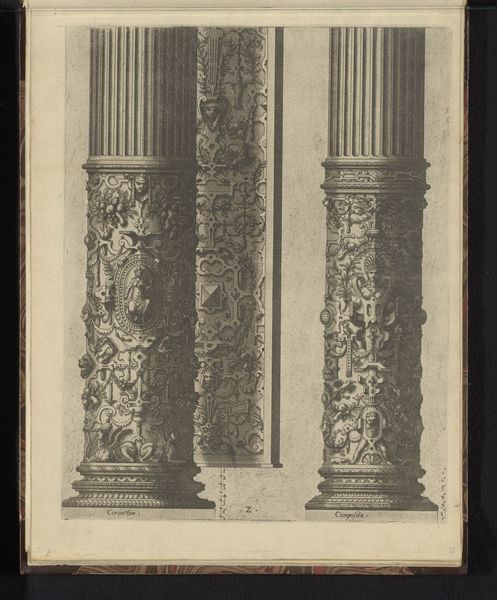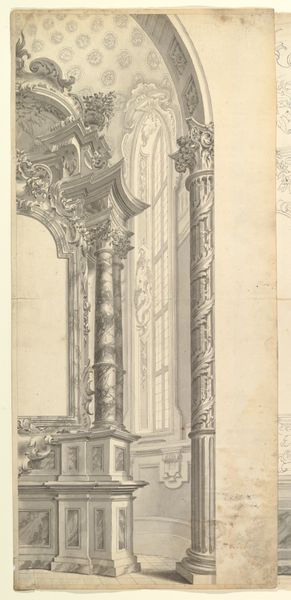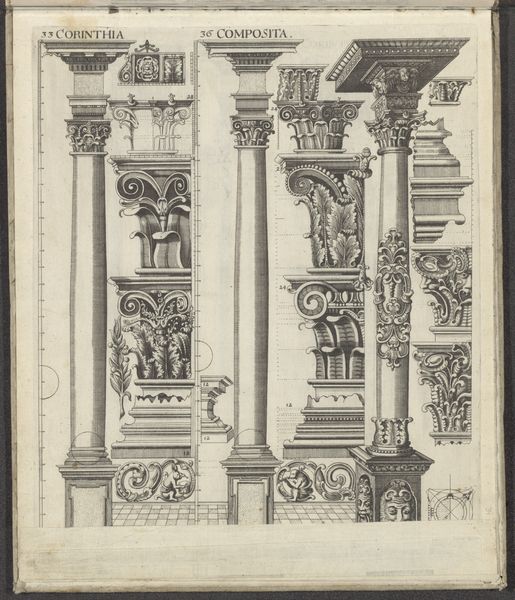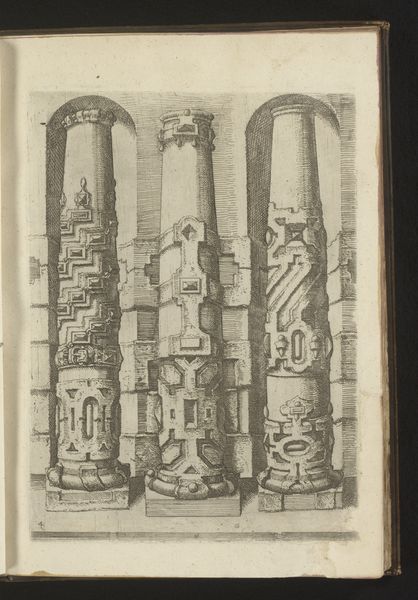
Vier schachten van Ionische zuilen, gedecoreerd met bladranken, mascarons, grotesken en rolwerk 1593 - 1595
0:00
0:00
drawing, paper, ink
#
drawing
#
pen drawing
#
paper
#
form
#
11_renaissance
#
ink
#
column
#
line
Dimensions: height 255 mm, width 185 mm
Copyright: Rijks Museum: Open Domain
Curator: This intricate drawing from around 1593, created by Wendel Dietterlin, showcases four variations of Ionic columns. Notice the extraordinary detail rendered through pen and ink on paper. Editor: My first impression is one of opulent fantasy. The sheer amount of decoration is overwhelming, yet mesmerizing. Each column seems to want to outdo the others in terms of fanciful invention. Curator: Dietterlin was a significant figure in Northern Mannerism, deeply influenced by Italian Renaissance architecture. His designs, though often impractical, circulated widely through engravings and influenced architectural theory. They represent a deliberate departure from the classical restraint that characterized earlier Renaissance thought, embracing complexity and symbolism. Editor: Absolutely. You see it in the inclusion of grotesque masks and intertwining foliage. The human face, or parts of it, becomes absorbed within the natural, emphasizing the connection and fluidity between man and nature, also blurring the line between the real and the imaginary, the possible and the impossible. It evokes a sense of transformation, of the world constantly in flux. Curator: Consider the period; this was an era of intense religious and political upheaval. Such highly stylized art with an emphasis on ornate structures offered an escape from reality and perhaps a form of subtle commentary on established norms. Art historians often place him within the context of architectural capriccio - drawings or prints which present visionary, impractical buildings and urban design. These capricci can reflect deeper dissatisfaction with real world conditions or politics. Editor: That resonates strongly. These aren’t simply decorative columns, but expressions of cultural anxiety. The faces integrated into the columns serve almost as guardians or silent witnesses, each expressing a particular emotion, fear or even hope within this volatile societal period. The viewer is left to question the permanence of the familiar structural forms, because, in reality, even architecture itself can reflect shifting power and change. Curator: Dietterlin was attempting to forge a new visual language that could speak to his patrons. In the same way today institutions utilize form and symbol, Dietterlin designed art meant to visually articulate social concerns and influence opinions. Editor: Indeed. This drawing is more than architectural fantasy; it's a mirror reflecting a society grappling with dramatic change and seeking new means of expression through symbols and images.
Comments
No comments
Be the first to comment and join the conversation on the ultimate creative platform.

